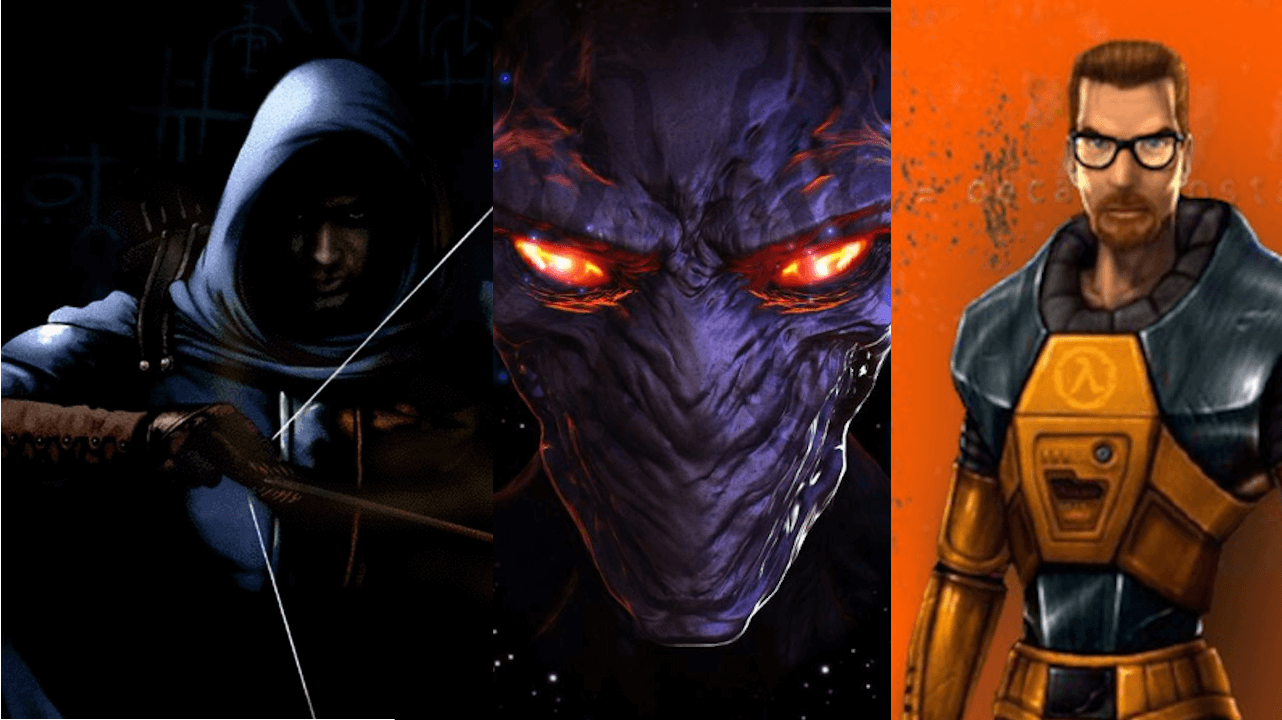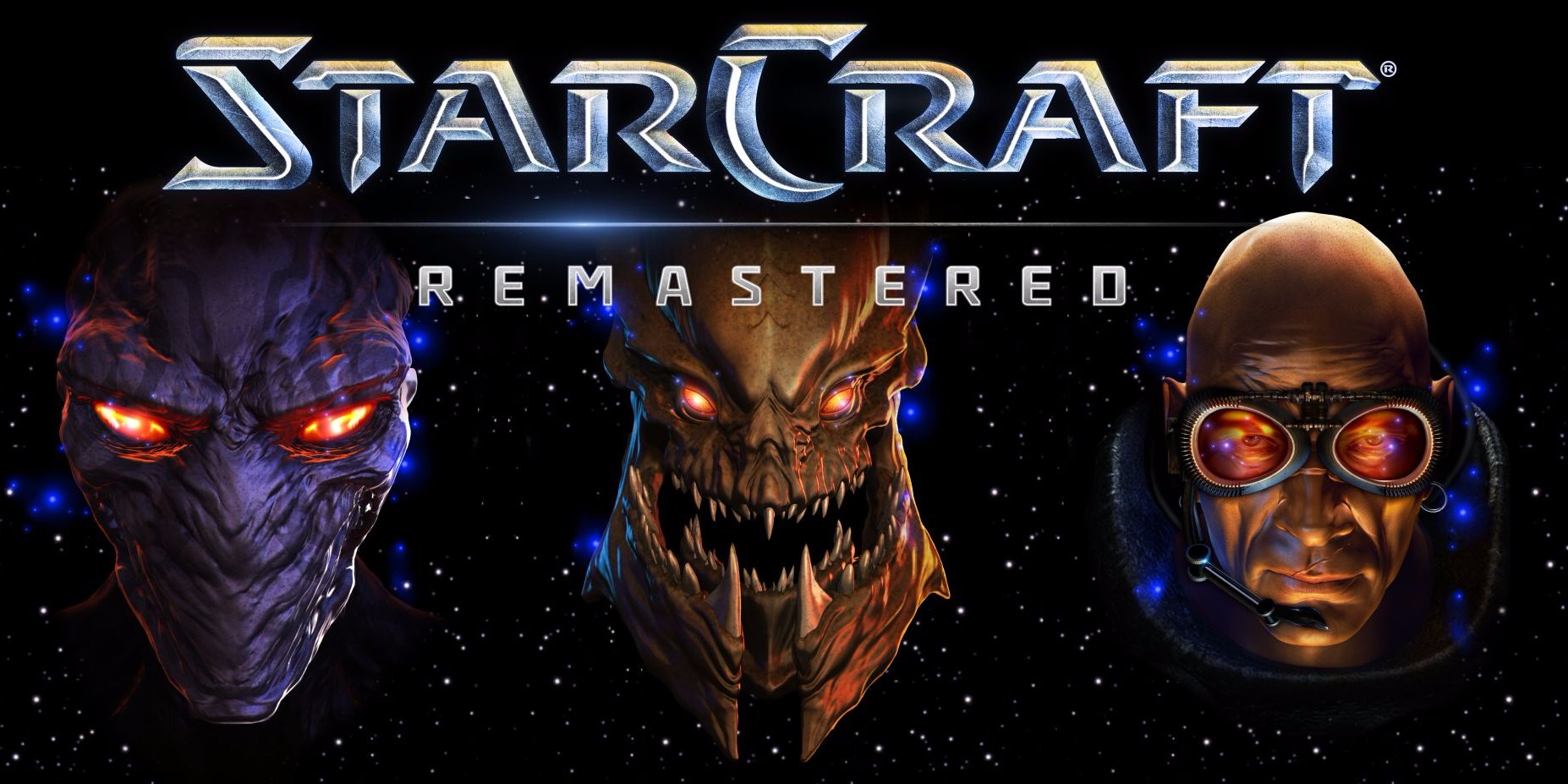There are times when a video game releases and the world stops… just for a second. Most of the time people wouldn’t even notice it in the heat of the moment. They wouldn’t feel the effects of the game’s impact until years later when its waves have rippled and rebounded to create something bigger and better than was ever anticipated. Any given year can have one or more games that fit that description, but today we’ll talk about one year that stands out above the rest. It was a year filled to the brim with games that would shatter expectations and set new standards for what developers and consumers would want to see games become going forward. That year, as you might expect from the title, was 1998.
StarCraft
By 1998, Blizzard Entertainment had already leveraged itself as a premier PC gaming developer. They had twice proven themselves masters of the Real-Time Strategy genre with the Warcraft series and even kicked off the ARPG craze with the creation of Diablo. However, a new franchise was on its way, and it was going to take RTS competitive gaming from janky LAN parties and direct modem connections to a streamlined functional internet-based system that was, most importantly – fun.
Not only would StarCraft add an exciting blend of three playable races with distinct units that provided unique and complex strategies, but it would allow you to compete with players all over the world via Battle.net. You could bury yourself in a lore-heavy, voice-acted single-player campaign featuring Blizzard’s (now notorious) cinematics throughout and then head online to find out just how poorly your single-player skills transferred.
The strides StarCraft made in creating a landscape for deeper strategy in the RTS genre as well as a new online platform for competitive play can still be felt today in the world of gaming. The introduction and integration of mods into the online space also opened the door for a tsunami of inspired works that would ultimately lead to the creation of Dota and its many derivatives. StarCraft went on to sell at least 9.5 million copies and would be remastered in 2017.
Thief: The Dark Project
Before 3D stealth games were even really considered a genre, Looking Glass Studios developed Thief: The Dark Project and released it in November of 1998. The game placed you in the role of Garrett, a master thief with a knack for getting himself wrapped up in complex situations.
Thief stood out from most first-person games of the era by putting you at the opposite end of the spectrum when it came to combat. Rather than being a super-powered warrior armed to the teeth ready to mow down your foes, you were a regular guy who could be bested by a guard or two in sword-to-sword combat. The player would have to use of their skills, tools, and most importantly stealth to avoid guards or take them out silently. Staying quiet and out of sight was integral to your survival. It often required making careful use of your light gem, an item that told you how visible you were in your current position.
Thief took the first-person design from fast-paced Twitch games and transitioned it to one of patience and planning. Learning how the advanced AI would react and respond to something as simple as the sounds of your footsteps was a cornerstone in the success of your thieving endeavors.
The Dark Engine, developed in conjunction with the game itself, made use of advanced physics and lighting techniques that allowed for the use of shadow as a core mechanic in the game itself and gave arrows more realistic flight. It would go on to be used in Thief’s sequel as well as another groundbreaking game of its time, System Shock 2. Thief’s contributions to stealth games were integral in the development of the genre itself. Stealth games of all sorts have been inspired by this hit title and aspects are still in use in other games to this day.
Half-Life
One of the most notable games from 1998 has always been Half-Life. The first game from Valve not long after its founding proved not only to be one of the most popular and critically acclaimed games in history but would be the launching point for building one of the foundations of PC gaming.
Half-Life stood above its contemporaries, not only by being visually more impressive but also by building gameplay that differed dramatically from the Doom-inspired first-person shooters of the era. Gameplay that didn’t have you shooting every NPC you met and taking the time to explore detailed levels grounded in a more realistic setting was an important part of the experience. A wide variety of enemies and obstacles that often featured basic puzzle elements meant that players would have to do more than blaze through levels pulling the trigger. It took the genre from permanently sprinting and bunny hopping to crouching through air vents overnight.
Half-Life showed us that first-person shooters didn’t have to be about just guns and gore. They could feature gameplay that branched out with characters and level design that built up the atmosphere of the environment and told a story beyond your efforts to get to the biggest enemy and take them out.
It inspired countless games and mods and kicked off a franchise that, sadly, more than 20 years later hasn’t concluded. It was the successful starting point for Valve that let them build a company and create Steam, the digital distribution platform responsible for bringing modern PC gaming to the masses and taking all of my money. It set up the basis upon which FPS gaming became a place that could include powerful storytelling and world-building in addition to pushing graphical fidelity.
Metal Gear Solid
Another cornerstone in the monolith of stealth gameplay, Metal Gear Solid reignited a decade-old franchise and launched it into a driving force for owning a PlayStation. Hideo Kojima’s work in bringing Solid Snake to life with the iconic “Tactical Espionage Action” proved to be unforgettable for several reasons.
Not only were the players participating in great stealth gameplay in some of the earliest 3D console games, they were also getting a unique and interesting story. Making use of cool gadgets and weapons to incapacitate guards was great, but memorable characters made the game a hit. With iconic voice acting and a twisting story, it was easy to see why the game was so successful.
Metal Gear Solid would spawn four more direct sequels along with a few spinoff games that also found plenty of success. Despite the franchise most likely being lost, many stealth games borrowed mechanics that are still in use today. Games like Splinter Cell cultivated its own extensive franchise using aspects from both Metal Gear Solid and Thief.
Kojima’s work as an elaborate story weaver has led him to new endeavors that still have some of that classic feel he kicked off with Metal Gear Solid in 1998. The legacy of third-person stealth games owes much of its history to a crazy game about world powers and strange military conspiracies. The good news is that some of it seems like it might not have been true.
Baldurs Gate
1998 was coming to an end, but Bioware had to squeeze one more powerhouse game into the year. After the moderate success of the mech game Shattered Steel (back when everyone was making mech games) Bioware was inspired by what is the core of every modern RPG, Dungeons and Dragons. On December 21st, they released Baldur’s Gate.
While not the first RPG and not even the first featuring isometric gameplay, it stood out from its contemporaries in many ways. Baldur’s Gate not only would have the players weaving through an elaborate story, but it would be driven through a huge variety of dialogue options that could involve stat checks and have impacts on characters and the story. The customization let players be more invested in those characters, much like D&D and the long-running pen and paper system was present throughout the game in a streamlined form. It brought the world of complex and deep RPGs to the mainstream.
Baldur’s Gate had a major effect on the RPG genre, not only in the inspiration of their games but for many developers. CRPGs were always popular among the more dedicated fans, but after Baldur’s Gate, they had a new following. Even though the golden age of the subgenre was in the late 80s and early 90s, Baldur’s Gate is often cited as one of the favorites of modern fans.
Bioware went on to use this formula to build other epic games such as Dragon Age and Knights of the Old Republic. The influence on Western RPGs resonates to this day and the recent revival of the franchise seems to be similarly well received.
There are, of course, many years that have been notable in gaming. For some, it may be the year one or two of their favorite games were released. It’s hard to ignore how influential that can be. However, from my perspective, it seems like 1998 laid the foundation for several notable reasons. Graphics accelerators were just starting to take hold in PCs. Developers were getting in the swing of creating 3D games for the fifth generation of consoles. More games seemed to be turning the corner from fun ways to pass the time to conveyors of memorable stories. It wasn’t just a year of great games, it was a year games became great. For those reasons, I’ve come to believe 1998 to be the greatest gear in gaming.
What notable games of 1998 made an impact on you? Is there another year that you believe was even more important to gaming? Let us know in the comments!
Article updated Sept. 24, 2023. Original publish date Nov. 30, 2020









